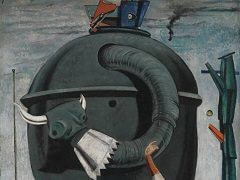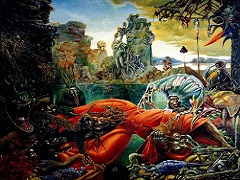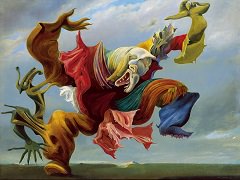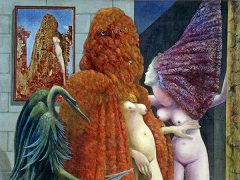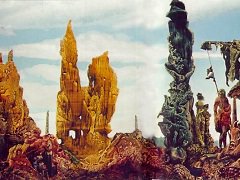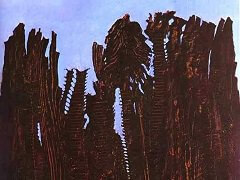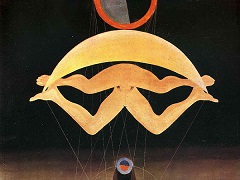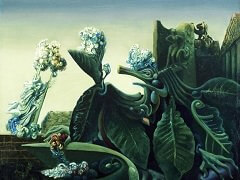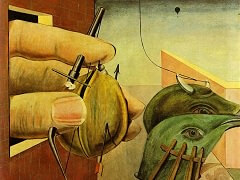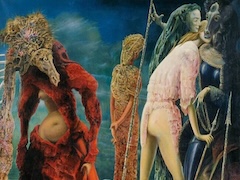Solitary Tree and Married Trees, 1940 - by Max Ernst
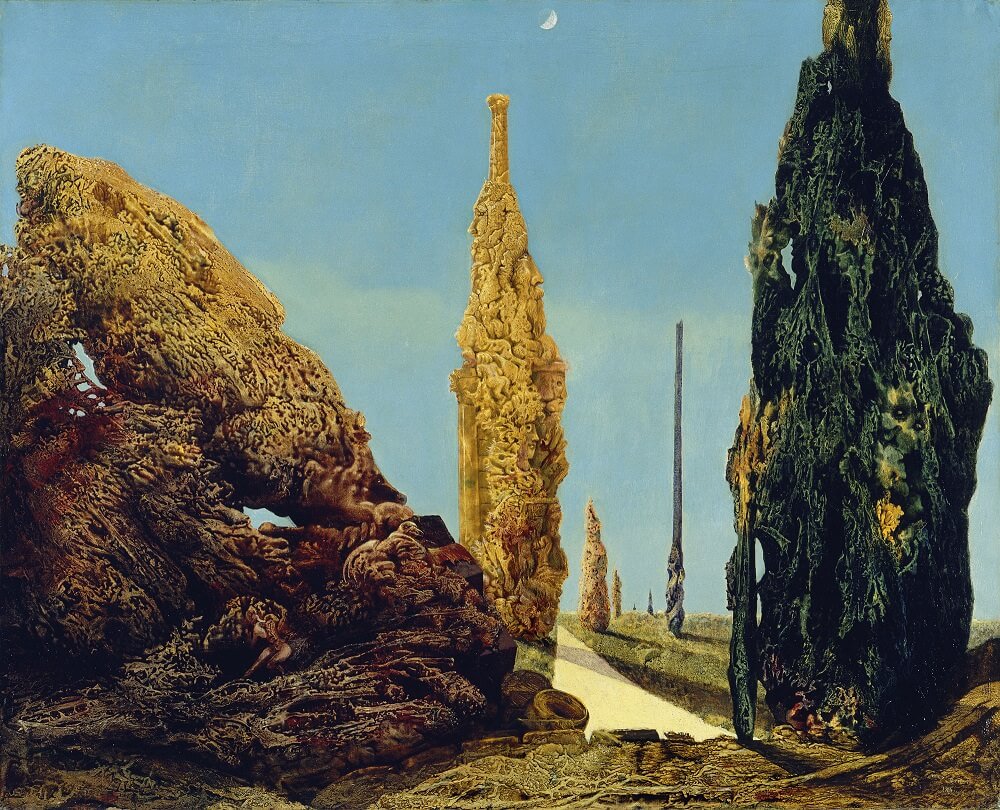
During the latter part of the 1920s, Max Ernst developed a process that he called 'frottage', an 'automatic' form of painting that he adopted in response to Andre Breton's First Manifesto of Surrealism of 1924. He first employed this technique in his 'Natural History' series of 1926, adapting the technique to painting for his 'forest' series, depicting natural forms that were inspired by the Romanticism of, among others, Caspar David Friedrich (1774-1840), For Ernst, the Romanticism was of a familiar landscape of timeless natural forms.
At the outbreak of the Second World War, Ernst was interned as an enemy alien in France and was unable to flee to New York until the summer of 1941, During that period he produced Solitary Tree and Married Tree, a painting that encapsulated many of his concerns at this time: his imminent departure from a familiar European landscape was a preoccupation, Ernst had already been married and divorced twice and was living with the English painter Leonora Carrington, who, as a result of his arrest and their subsequent separation, had a nervous breakdown during this period. The pointing brings together recognizable forms, but ones that are marred by the uncertainty and insecurity of his European homeland and his personal life. The style that he used to convey these feelings suggests a return to his earlier experiments with collage,

